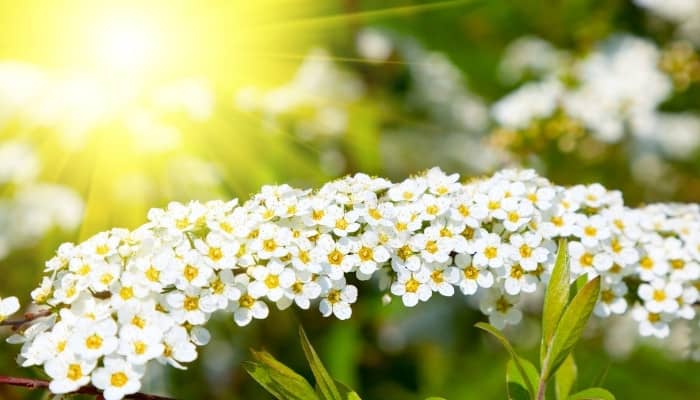Despite their adorable and beautiful appearance, deer can cause significant damage to your garden.
If you’ve been dealing with a deer problem and are looking for some deer-resistant shrubs to add to your garden, you’ve come to the right place.
Here, we’ll break down spirea and other deer-resistant shrubs that will keep your garden looking fresh and vibrant while keeping away those hungry deer.
Is spirea deer resistant? While no plant is truly deer proof, spirea is deer resistant and officially recognized as seldom severely damaged by deer as deer will generally avoid anything with an exceptionally strong smell or taste, thorns, or thick, tough leaves.
Among all of the deer-resistant shrubbery out there, spirea is a bit of an enigma. Read on to learn more about this unique shrub of many varieties that might just be the answer to your deer problem.
Best Deer-Resistant Spirea Varieties
While spirea shrubs on the whole are recognized as being deer resistant, nobody knows exactly why deer don’t like to eat them.
Spirea is known to excrete salicylic acid, an ingredient used to make wintergreen oil, so there is a possibility that the faint wintergreen scent of the acid might deter deer.
Here are a few popular varieties of spirea that are known to deter deer the best.
Japanese Spirea (Spiraea japonica)
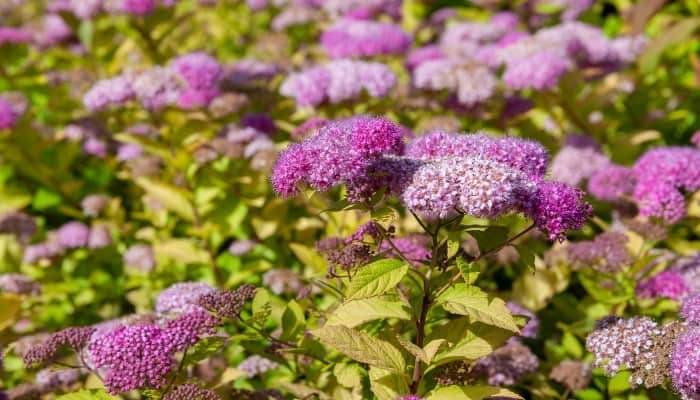
Japanese spirea is a versatile type of spirea popular among many gardeners.
Japanese spirea blooms in late spring through summer and is known for its tightly packed clusters of pink and white flowers that transition to a lovely array of fall colors in the autumn.
These flowers are also known to attract pollinators like bees and butterflies. Japanese spirea can grow anywhere from 3-6 feet tall, depending on how you cultivate them.
Bridal Wreath Spirea (Spiraea prunifolia)
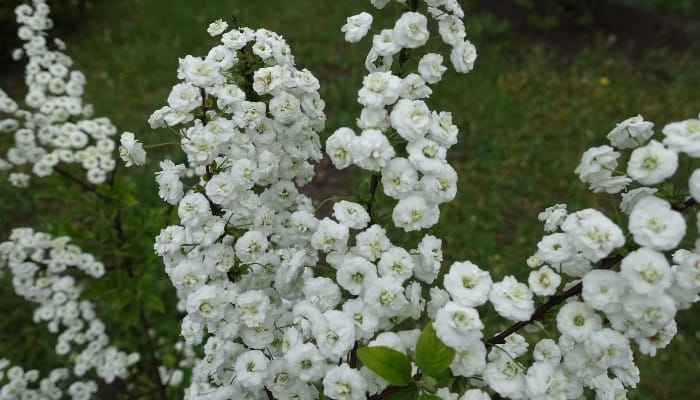
Bridal wreath spirea produces white double flowers in the spring that grow upward and then droop down to create arches. Like many types of spirea, they are hardy shrubs that require little maintenance.
Like Japanese spirea, bridal wreath spirea’s foliage changes color in the fall. When the cold weather sets in, bridal wreath spirea’s leaves change from green to various shades of red, yellow, and orange.
Anthony Waterer Spirea (Spiraea x bumalda)
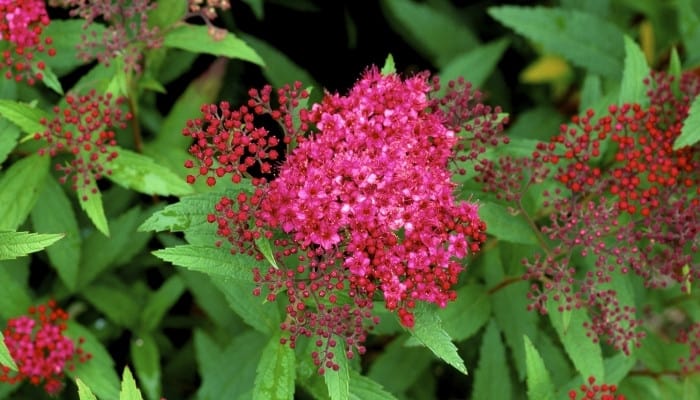
Anthony Waterer spirea grows low to the ground in comparison to the other two varieties mentioned above.
In the spring, Anthony Waterer spirea produces densely-packed clusters of red-purple flowers that fade to a variety of shades of pink as the summer wears on.
Anthony Waterer spirea also attracts butterflies, as the flat-top clusters of flowers create an easy surface for these pollinators to land.
Depending on where you are, the leaves will be a blue-green in the summer and deepen to a burgundy color in the fall.
More Deer-Resistant Shrubs
Spirea is just one of many types of shrubs that are deer resistant. If spirea is unfit for your climate or you simply prefer something different, try these shrub species instead.
Boxwood (Buxus spp.)
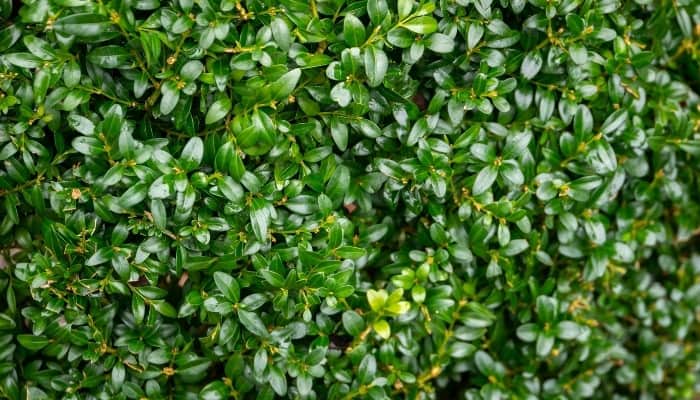
Boxwood shrubs are part of the evergreen family, and unlike deciduous plants (despite their broad leaves that are deciduous-like), they keep their foliage throughout the winter.
Most types of boxwood used in gardens tend to be dwarf boxwoods ranging from 2-8 feet tall.
Because of their low-maintenance care regimen and thick foliage, they are a popular choice for privacy hedges as well as topiaries.
As we mentioned above, deer dislike certain scents and tastes. In the case of the boxwood shrub, boxwoods produce alkaloids that deer don’t like, keeping them from munching on these hedges.
Juniper (Juniperus spp.)
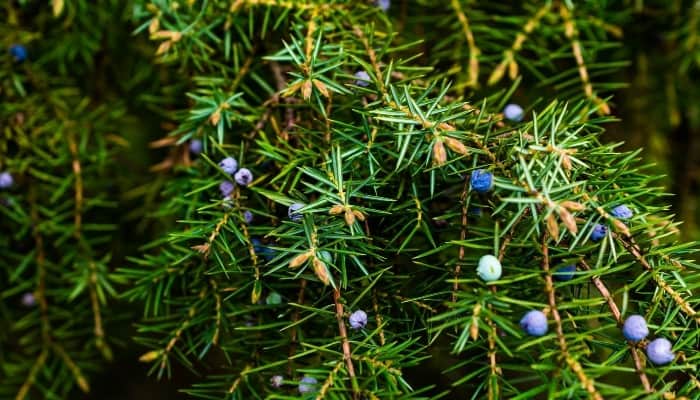
It’s really no wonder why deer and their sensitive noses don’t like junipers. Because junipers are part of the cypress family, they give off a strong, thick odor.
Like boxwoods, junipers are low maintenance and only need occasional trimmings to keep them from becoming overgrown.
That being said, junipers come in over 170 varieties, and some of them have natural shapes that can be attractive shrubbery for your garden, with no pruning needed at all.
Junipers are also part of the evergreen family and produce either needles or overlapping scales. Like nearly all evergreens, junipers are hardy plants that can withstand harsh conditions.
Beautybush (Kolkwitzia amabilis)
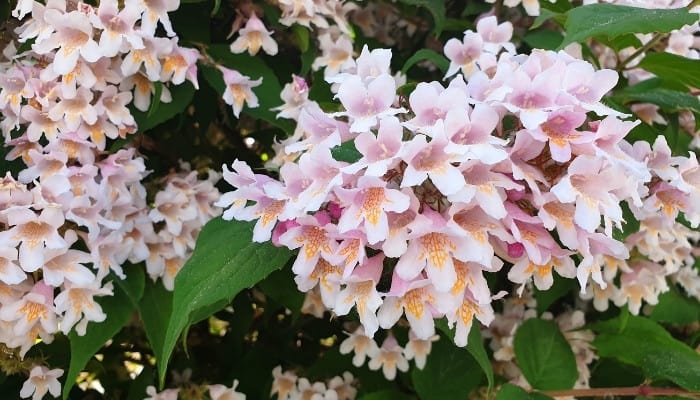
Beautybush is a late-blooming member of the honeysuckle family that yields light pink flowers in the summer and dark green leaves and berries in the winter.
This change in foliage makes it the perfect versatile shrub to accent your garden no matter what season it is.
Beautybush is a rather large shrub, as it can reach a height and spread of 6-10 feet when it reaches maturity. It’s a speedy grower as well, growing up to 2 feet per year.
Arrowwood Viburnum (Viburnum dentatum)
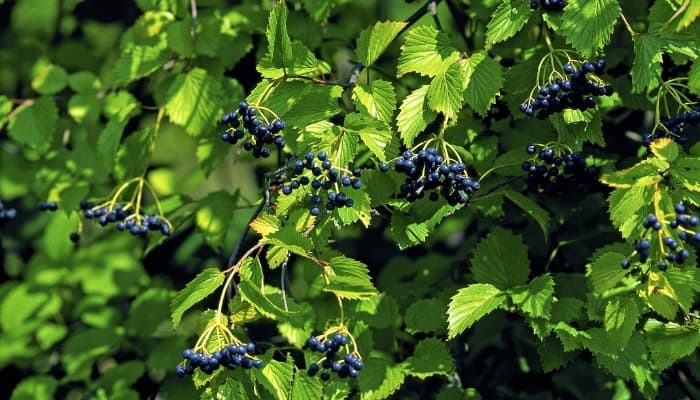
Like the beautybush, arrowwood viburnum is ideal for gardens located in climates that have cold weather as its foliage changes with the seasons.
In the spring, arrowwood viburnum produces white flowers and blue berries, and in the fall, the leaves turn a lovely shade of red.
This is another large shrub, growing 6-10 feet with the opportunity to grow even bigger in optimal conditions.
Trimming your arrowwood viburnum once yearly after it flowers in the spring will keep it from getting too unruly.
Related Questions:
How Fast Does Spirea Grow?
Spirea grows exceptionally fast, reaching maturity in only a few years. Even after a hard pruning, it will rapidly put forth new growth and quickly be as tall as it once was, often within just a few months.
Can I Cut Spirea to the Ground?
Yes, you can cut spirea all the way to the ground. This is especially good for spirea as it will keep the shrub fresh and promote regular blooming. Just don’t prune until after flowering if you want to enjoy spring blooms.
Conclusion
In conclusion, spirea is deer resistant, but rather curiously, nobody seems to know just why that is.
With its seasonal blooms and festive foliage, no matter which variety you choose, spirea will liven up your garden and stand tall in the face of your local deer herd.
Even if spirea isn’t your cup of tea, many other species of shrub will do the trick just as well.
Sources:
https://www.thespruce.com/english-boxwood-shrubs-2132072
https://www.gardeningknowhow.com/ornamental/shrubs/juniper/care-of-junipers.htm
https://www.arborday.org/trees/treeguide/TreeDetail.cfm?ItemID=788
https://www.arborday.org/trees/treeguide/TreeDetail.cfm?ItemID=931
https://www.gardengatemagazine.com/articles/flowers-plants/plant-guide/your-guide-to-spirea/

